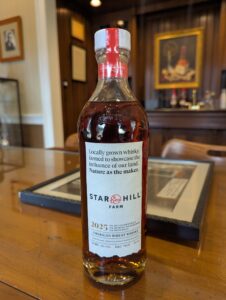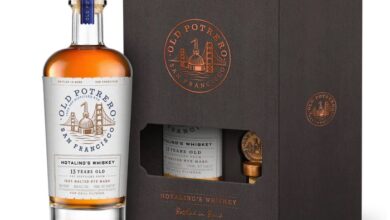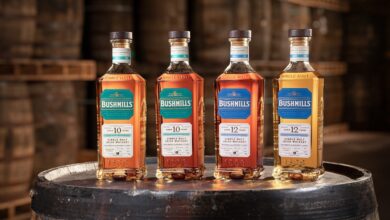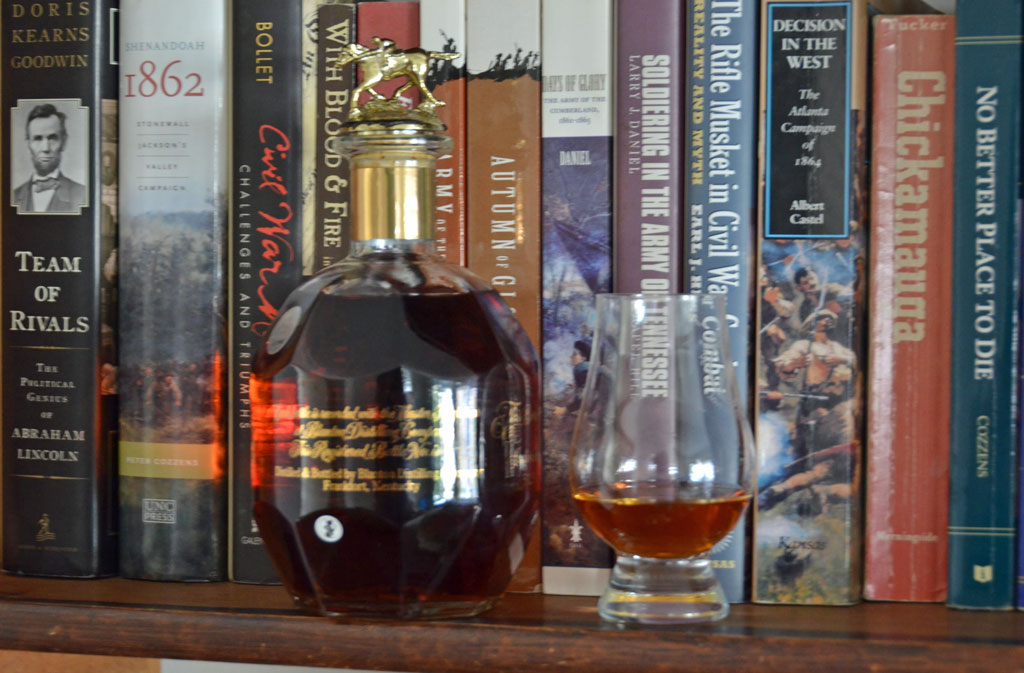Maker’s Mark Departs From Bourbon With New Brand
Rob Samuels Leaves His Own Maker's Mark
By Richard Thomas

(Credit: Richard Thomas)
When Maker’s Mark released Maker’s 46, it was a major landmark for Kentucky bourbon. Since its inaugural release in 1953, the only product the Loretto, Kentucky company had ever sold was its flagship expression, Maker’s Mark itself. Five decades passed between Bill Samuels, Sr. starting the family business over again, famously burning their old recipes and embarking on new path that would lead to wheated bourbon, and the first brand extension undertaken by Bill Samuels, Jr.
The new bourbon was major news in whiskey circles, although it did not gain the mainstream media attention that the attempt by Maker’s Mark to cut the proof on its bourbon three years later would. In hindsight, it would have been hard to understate the importance of Bill Samuel’s embracing stave insert-based secondary maturation, given what later derived from Maker’s 46. It led to the construction of the industry’s first (and still only) aging cellar in 2016; expressions like their Wood Finishing Series and the company’s entire private barrel program sprang from Maker’s 46; and the brand extension opened the doors to variants on the original Maker’s Mark, like cask strength and Maker’s Mark 101.
But in all that product expansion, Maker’s Mark remained part of a small group of major American whiskey-makers who were making just the one thing. Everything Maker’s Mark was derived from just the one distillate, and at the time only Jack Daniel’s could also say that. Even though George Dickel Rye was and continues to be sourced, it’s still a different whiskey; Four Roses makes only bourbon, but famously makes ten different versions of it. Then Jack Daniel’s too fell out of that club, when they introduced their rye in 2017.
And then there were none. It seems every generation of Samuels gets their opportunity to make a major addition to the family legacy, and the turn of Rob Samuels has come. His extension takes the form of the first not-bourbon to be made at Maker’s Mark, complete with a new brand: Star Hill Farm Wheat Whiskey. As momentous as that release is, however, it is really just the physical manifestation of Rob Samuels’ real contribution to Maker’s Mark: his passion for regenerative agriculture.

(Credit: Elisa Miller)
Regenerating the Land
Regenerative agriculture was borne from the realization that while the Green Revolution of the mid-20th Century vastly increased food outputs, many features of it turned out to be unsustainable in the long run. A particular focus of regenerative agriculture is the depletive or even destructive effects modern farming has on the soil, with some experts suggesting many farms are half a century away from turning barren. Regenerative agricultural practices sometimes overlap with organic farming, but are not the same thing, because the former is focused on the quality of environmental features such as the soil and the water, while the later rejects synthetic inputs like nitrogen fertilizer and pesticides. For example, regenerative agriculture is hostile to tilling, which is not an issue considered by organic farming; while it views synthetic inputs from an objective, results-on-the-environment perspective rather than bans their use entirely.
Samuels’s initial interest in regenerative agriculture was, figuratively and literally, rooted in his bourbon, with his initial questions following the line “will this make it taste better?” The answer eventually came back that more than half of a grain’s flavor may be determined by the state of the soil its grown in. In other words, even with the most lavish fertilizers, poor quality soil may yield a large harvest, but of mediocre grain.
From there, he became a true believer in the movement. The distillery had already secured its water quality in 2017 by taking ownership of the entire immediate watershed, but that was a separate endeavor. Maker’s Mark went on to become a founding partner in the 100 Million Acres Initiative (committed to moving 100 million acres of US farmland to regenerative agriculture by 2030), and deeply involved in the documentaries Common Ground and Kiss The Ground. Moreover, under Samuels’s leadership Maker’s Mark has put its money where its mouth is: 86% of the grain used at Maker’s Mark in 2024 was sourced from regenerative farming, and they hope to reach 100% this year. They’ve already got their corn and wheat nailed down, but are still working on the barley.
Star Hill Farm Wheat Whiskey
As Maker’s Mark engaged in the move to regenerative sourcing, it also began work on it’s first new mash bills and product line several years ago. For the new Star Hill Farms brand, two new mashes were developed: one of 70& wheat and 30% malted barley, and another of 100% malted wheat. For this inaugural release in the series, the proportion is 27% of the entirely wheat whiskey and 73% of the wheat and barley one.

(Credit: Richard Thomas)
These two distillates were aged in a mix of normal American Standard Barrels (ASB) with Char Level III and different experimental or exotic ASBs: barrels with ridged cuts made to the interior of the barrel (similar to the Sinatra barrels of Jack Daniel’s); barrels with a mix of American and French oak; and all French oak. These were aged for seven to eight years without the customary Maker’s barrel rotation.
The whiskey is also the first product to carry the new Estate Whiskey certification. To pass that hurdle, a whiskey must draw 2/3s of the grain from within 70 miles of the distillery (the 2/3s mark was chosen because the only distilleries within 70 miles of a barley farm are in the Dakotas); must exercise some control over the farming methods in question (either by contract, leasing or outright ownership); and the whiskey must be wholly made by the distillery.
Star Hill Farm Wheat Whiskey 2025 was bottled at cask strength, 114.7 proof. All proceeds go to regenerative agriculture education funding. In a noteworthy twist, the bottle bears the embossed stamp SVIII, as opposed to SIV, as Rob is the eigth generation Samuels distiller. It is set to retail for $99.99.
Rob Makes His Mark
Star Hill Farm Wheat Whiskey will be viewed as a major departure, as it should. It represents not just one, but two new mash bills for the last distillery that was doing just the one thing. Moreover, it also leaves behind the distillery’s commitment to consistency through the labor intensive practice of barrel rotation.
But in other ways, it is still a Maker’s Mark whiskey. As Rob Samuels said about it, “My grandparents’ vision is still in everything.” The choice of wheat whiskey ties it to the signature grain of Maker’s Mark, which built its identity around being a wheated bourbon from the start. The range of barrel stock used to age the whiskey draws on the entire infrastructure built up to support Maker’s 46 and all its spin-offs. And, finally, the whiskey was made with Star Hill Farm water, in the Maker’s stillhouse, and draws on the same regeneratively farmed grain.
And that is the part that is the real departure, the real twist Rob Samuels will leave on the family legacy. Most bourbon drinkers are likely unaware of the path blazed by the company to sustainable farming, and in the current politico-cultural climate some are already scoffing, but where Maker’s Mark has gone others will inevitable follow. Moreover, the distillery is a major Kentucky tourist draw, and anyone who travels there is going to learn about it, especially on their Farm Tour. The seeds were sown some years ago, and now they show some promise.




